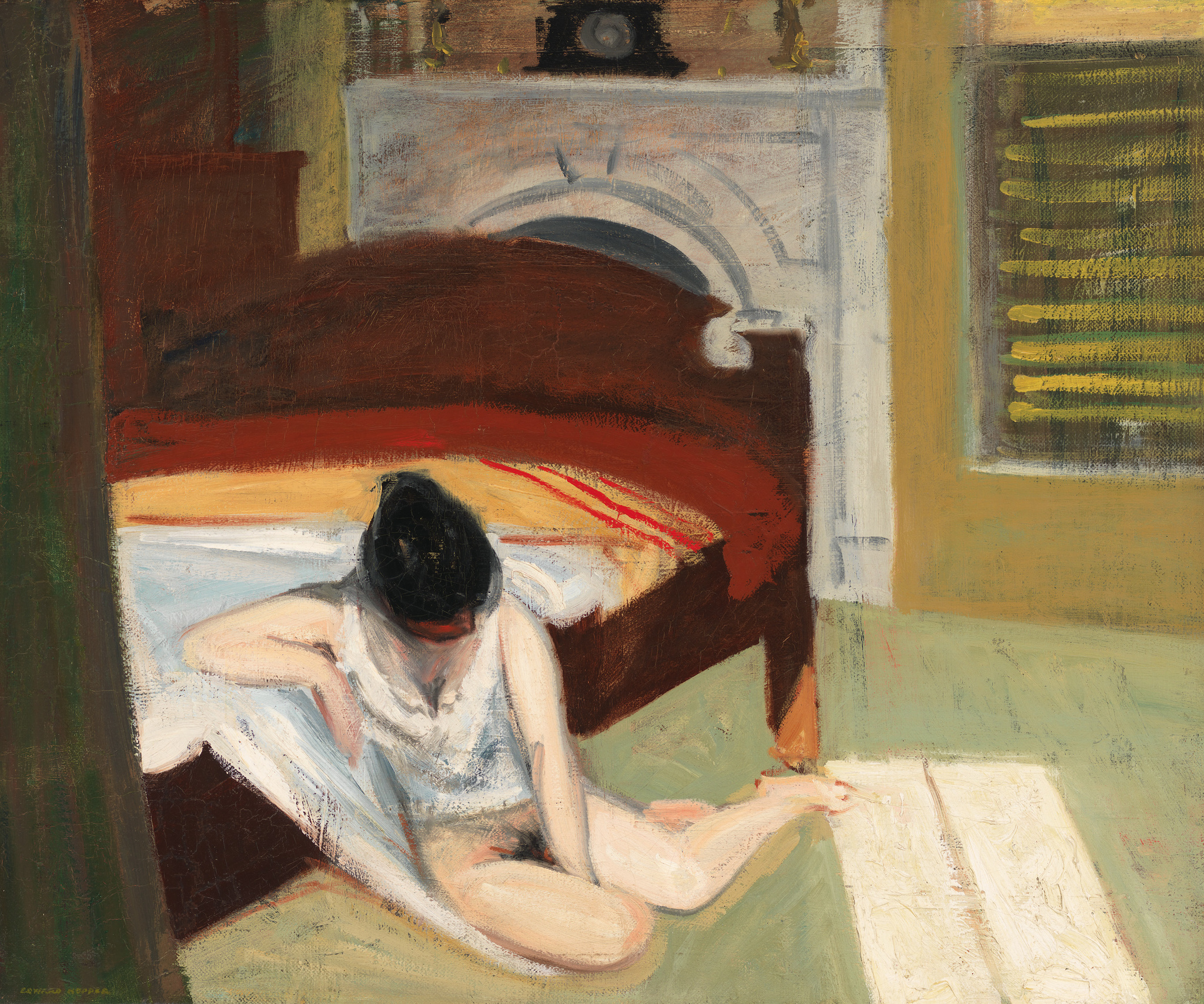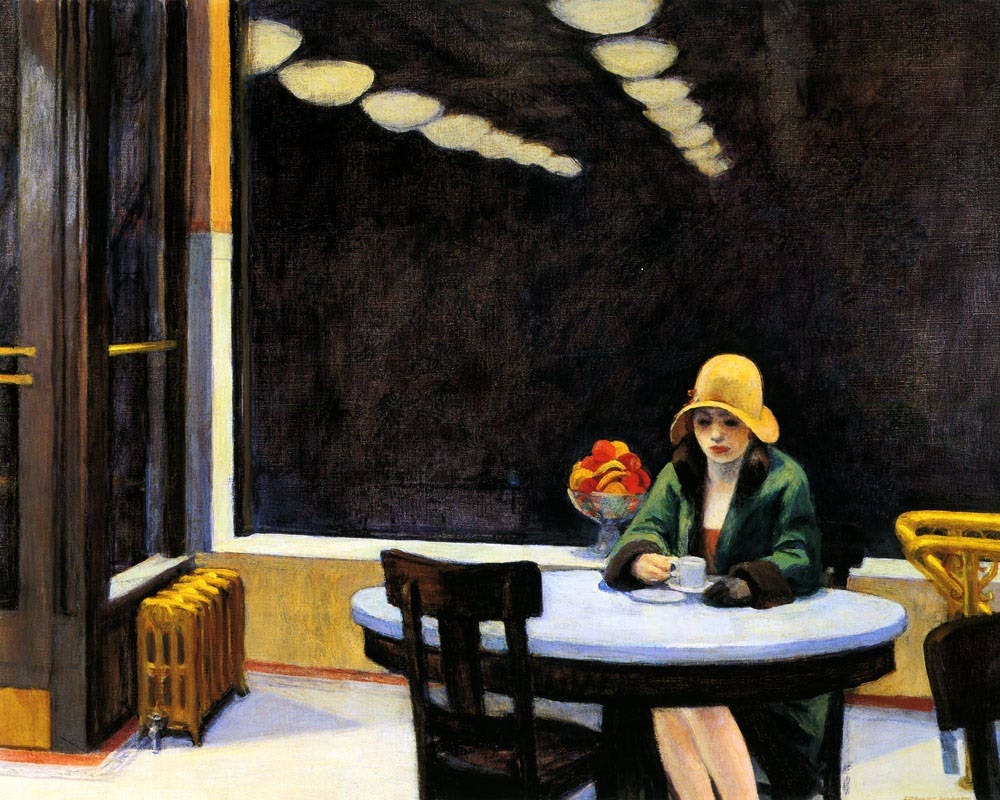Summer Interior and Edward Hopper’s Women – Learning the Ropes of Romance
In Summer Interior, we see a solitary woman at the center of an unknown crisis. Edward Hopper‘s women appear frequently within his oeuvre — depicted as looking longingly out of windows, passively into their laps, or engaged in some menial activity.
Through Summer Interior, there is a stark realization in Hopper’s realism. It forces us to look upon a moment in time that we should not have the privilege to observe. His painting conjures within us an array of emotions and gradually forces us to realize the tragic nature of his subject’s situation.
A young woman sits on sheets pulled from her bed. Red faced and hunched, she is looking away in shame, or upset. An arm is stretched down between her legs, covering what we now see is her exposed bottom half. Certainly one example of the presentation of Edward Hopper’s women.

Summer Interior thrusts towards us an array of vulnerable intricacies. We can guess at the cause of this young girl’s pain. Maybe, we can attempt to identify the catalyst of her heartache. However, in doing so we gradually bring on the haunting truth that this scene is one that cannot be reflected on with anything but the eye of bleak cynicism. Powerless and passive, we are the intruding stranger peering through the closed window of a solitary woman’s personal life.

A Devious Kind of Detachment
Hopper’s signature insight comes in the form of viewer detachment. As such, he is able to use a seemingly plain image to push his viewer into the feeling that they are but a helpless observer in someone else’s world. Above all, he uses the dullness of a sepia-color palette, a claustrophobic bedroom setting, and a passive subject to project a reality so far removed from the romanticism of modern day “love”.
Typically, his subjects never look us in the eye. They stare out of windows, at walls, into coffee cups, and at the turned backs of disinterested men. The goings on within the painting never involve the viewer. The relationship portrayed is between Hopper and his expressionless subject alone.
Summer Interior is only one example of this but, in my opinion, it is one of the most tragically intimate of his paintings. His wife, Josephine, was a common subject of his and the varying dynamics of Hopper’s relationship with her clearly informed a number of his portraits. Jo, the assertive woman, and Ed, the physically imposing man of the house. Both players brought vices to the table. Despite this, the two remained married and continued to create together for over four decades. The question is, however, were these four decades of happy marriage or relationship turmoil?

Hopper’s paintings would suggest the latter to be more likely.
“>


